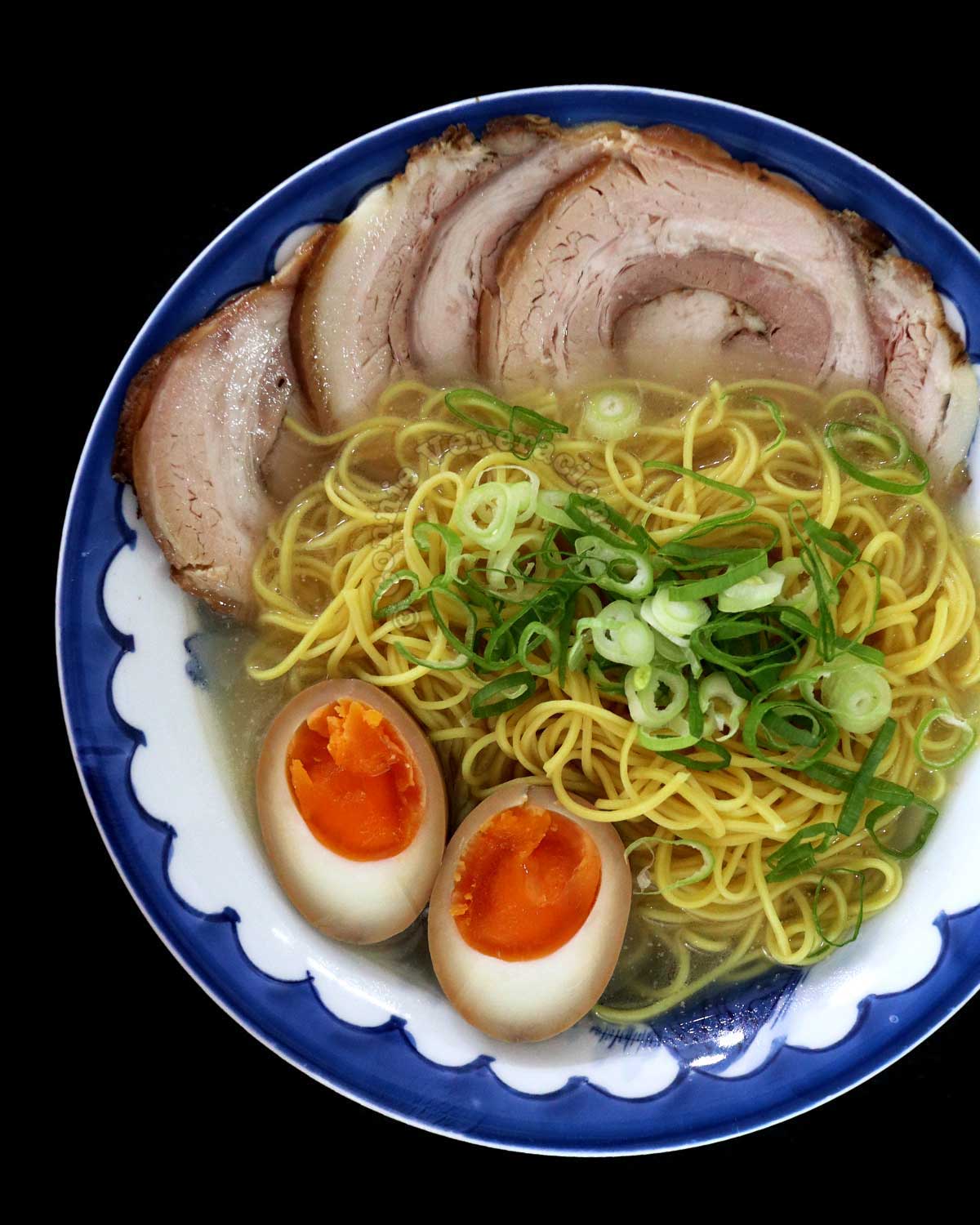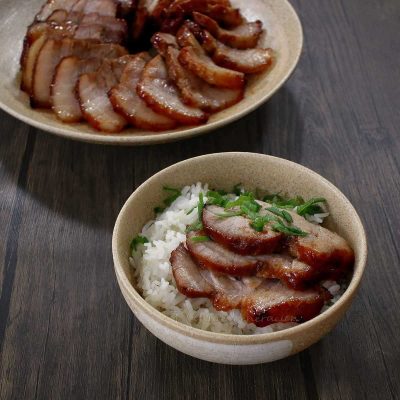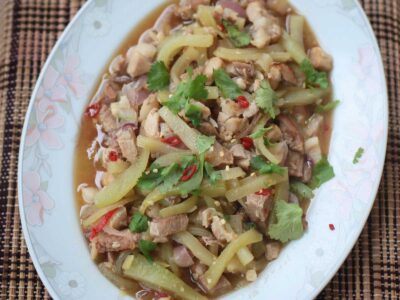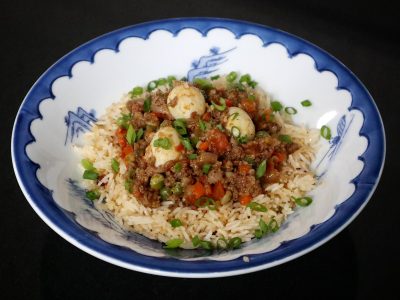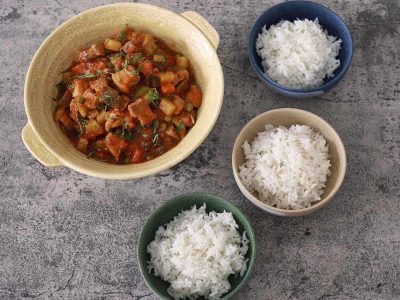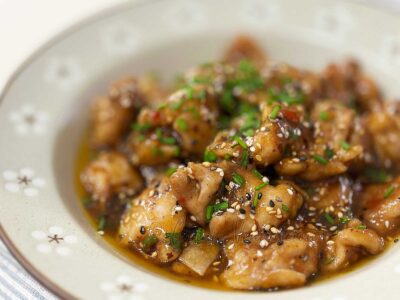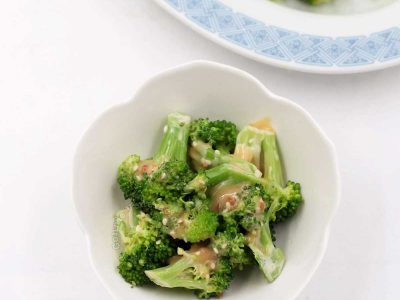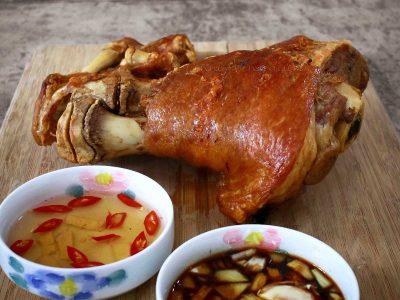What is chashu? It’s the Japanese adaptation of Cantonese char siu. Unlike its Chinese ancestor which requires skinless pork shoulder to be marinated and roasted over high heat, skin-on pork belly is used for chashu which needs to cook in liquid for a longer time.
Char siu (Cantonese-style pork BBQ)
Pork shoulder (called butt in some regions) cut into the shape of a log is marinated in five-spice powder, Shao Xing rice wine, sugar, soy sauce, sesame seed oil and hoisin sauce, and roasted.
The difference in the pork cut and cooking method account for the distinctive texture of the meat. While char siu is a bit chewy, well-made chashu is very tender — so tender that the meat falls apart in your mouth with very little effort.
If, like me, you like chashu in your ramen, it is not difficult to make at home. And there are tricks too to make sure that your chashu slices are perfectly cut when served with noodles and broth.
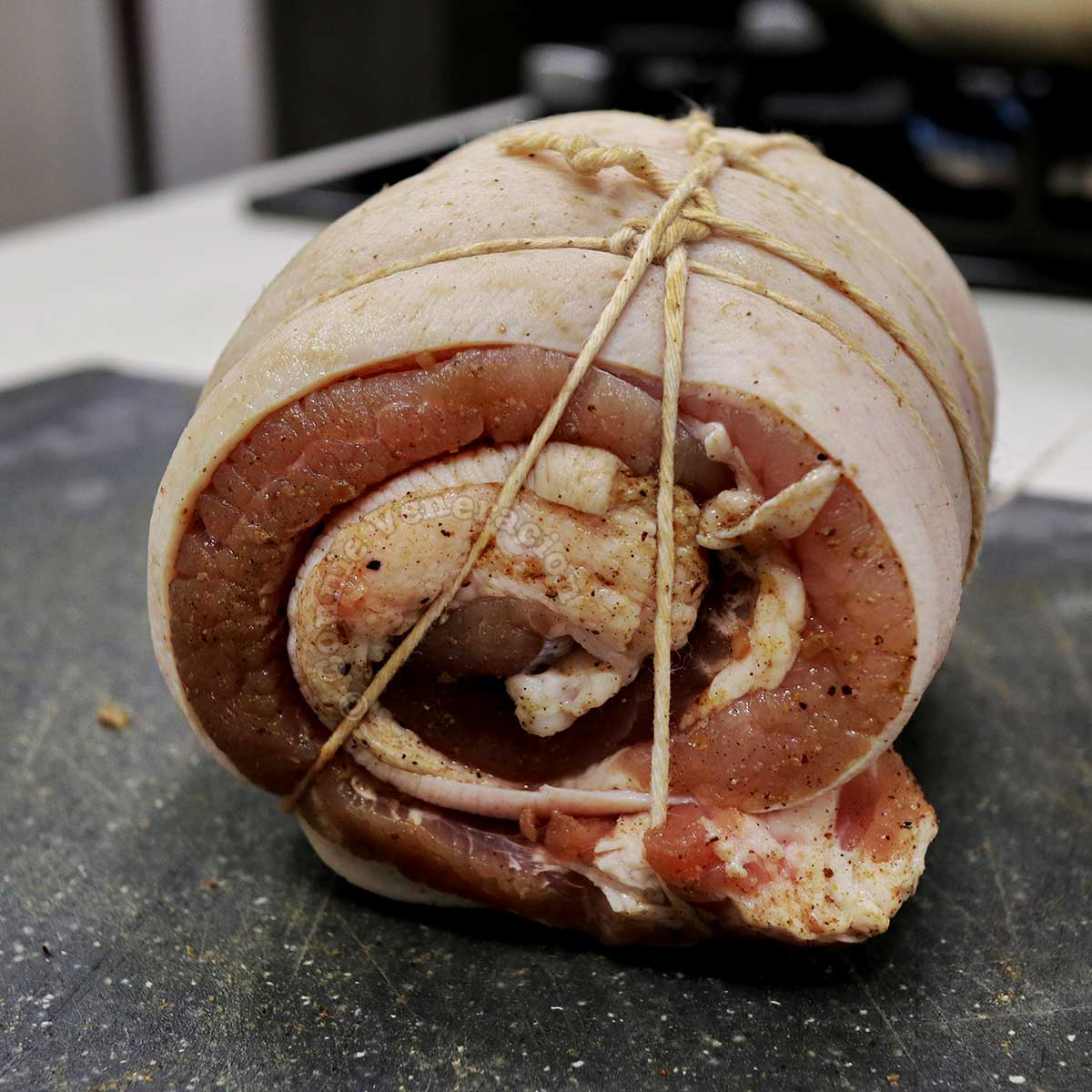
First, you need a slab of skin-on boneless pork belly. Seasoning before rolling is optional but I like to do it anyway. Lay the pork skin side down, sprinkle with salt and pepper then roll as tightly as you can. Take a length of kitchen twine and tie it up so that the slab does not unroll during any stage of the cooking.
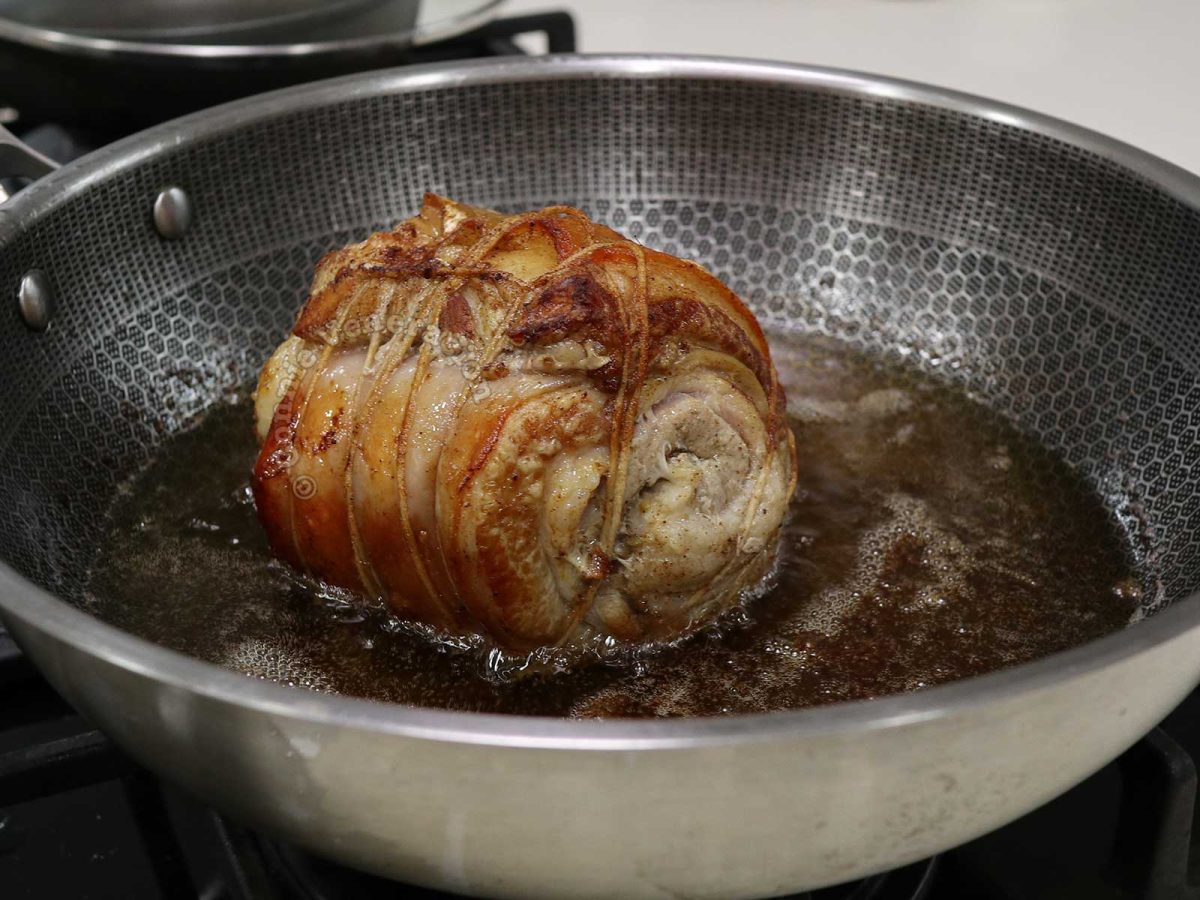
You take your rolled and tied pork belly and brown every inch of the surface in a pan of hot oil. Browning gives the skin texture and better color.
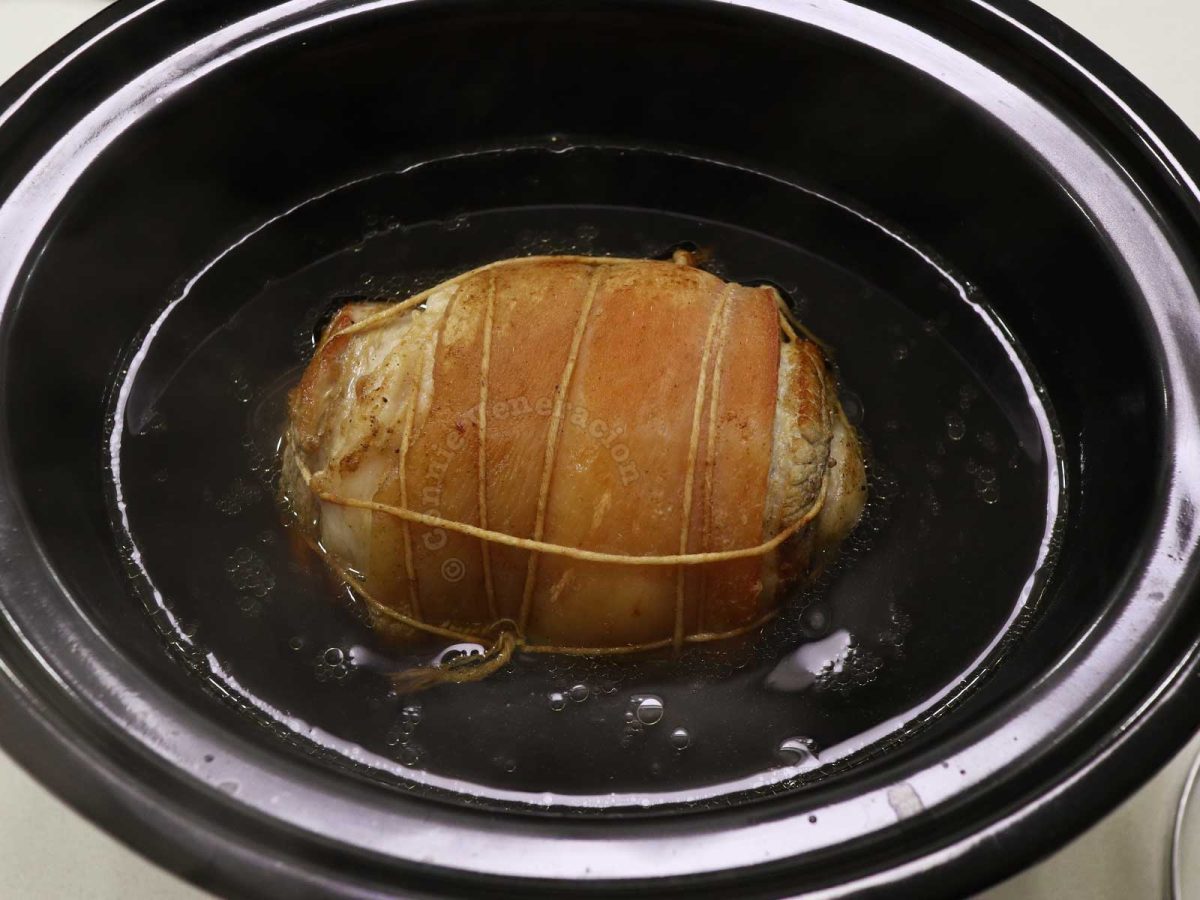
Next comes the braising. You can do this in a pot on the stovetop but a slow cooker does the job better. There’s less agitation because the liquid is barely simmering, and you don’t need to keep checking if the liquid has dried out because there is much less evaporation.
How long does the pork belly need to cook? For a kilogram of rolled pork belly with the cooker setting on HIGH, it takes five hours. The HIGH setting is to allow the alcohol in the sake and mirin to evaporate.
What’s the braising liquid? Soy sauce, sake, mirin and broth. The broth can be from pork or chicken bones, or even vegetables. But plain water is not a good idea as it has no flavor to impart. I like throwing in a piece of ginger and some leeks too for even more flavor.
Now, how does the pork not break apart when removed from the liquid? You let it cool to room temperature in the braising liquid. A cool slab of meat is easier to lift than a hot one. And leaving the pork in the flavorful braising liquid until cool also allows it more time to soak up the flavors.
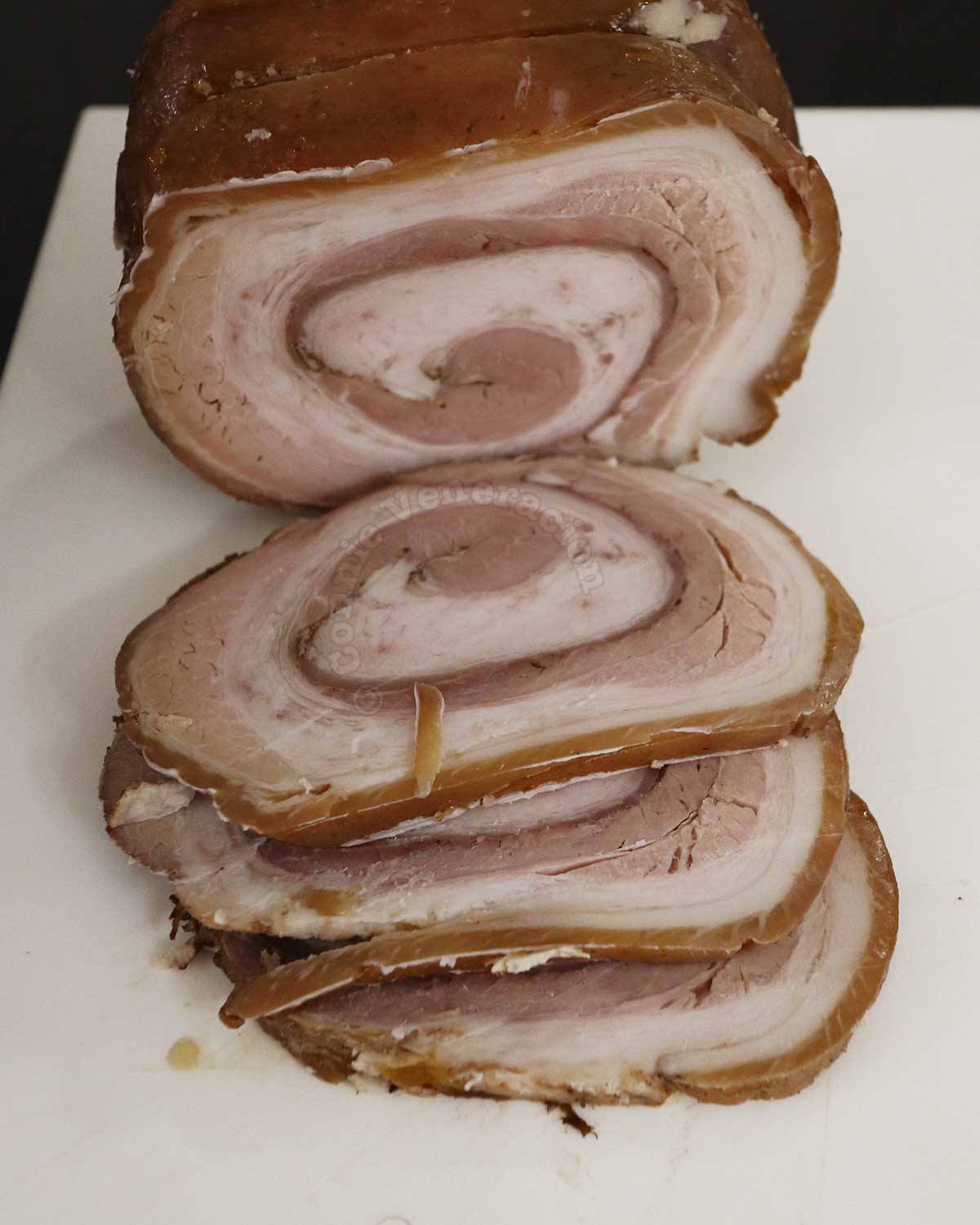
How do you slice such tender meat without making a mess? You take the cooled pork without cutting off the twine, wrap it in cling film or put it in a container and chill it in the fridge. Chilling allows the meat and fat to firm up and that will make it easier to get clean slices.
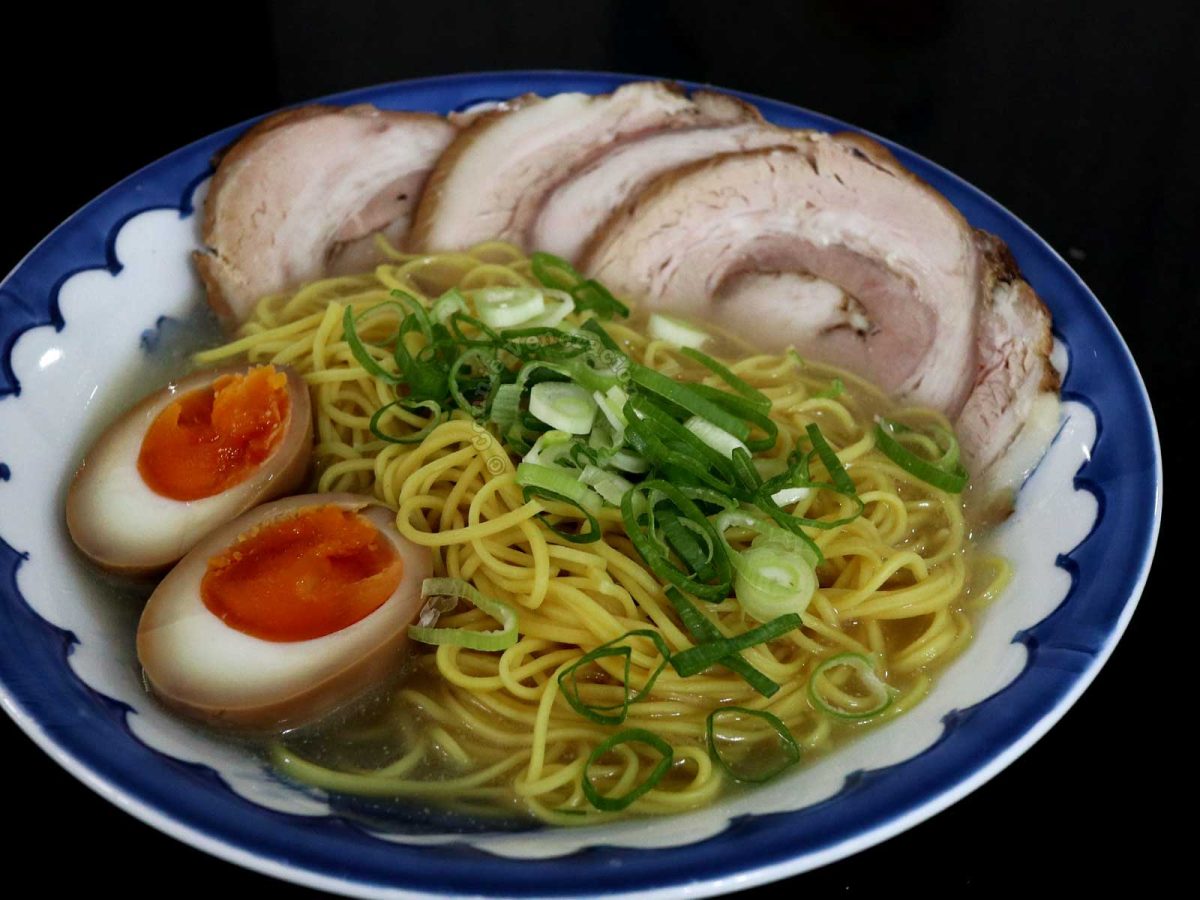
So, you eat cold slices of chashu in your bowl of ramen? Well, no. There are two tricks to serve the meat hot with your noodles. One requires a tool called a kitchen spider and the other simply requires a ladle.
If you want the chashu slices to be piping hot when served, arrange the slices of pork in a kitchen spider then lower the spider into a pot of simmering broth. Yes, the same broth that will go into your bowl of ramen. Then simply slide the pork slices into a bowl of noodles, ladle in broth and serve.
The second technique is to assemble the bowl of ramen first. Drop in the noodles and arrange the cold pork slices on the slide. Then, slowly ladle very hot broth directly over the pork. Do this repeatedly until you have enough broth in the bowl. By that time, the pork should have warmed up.
Chashu (Japanese braised pork belly for ramen)
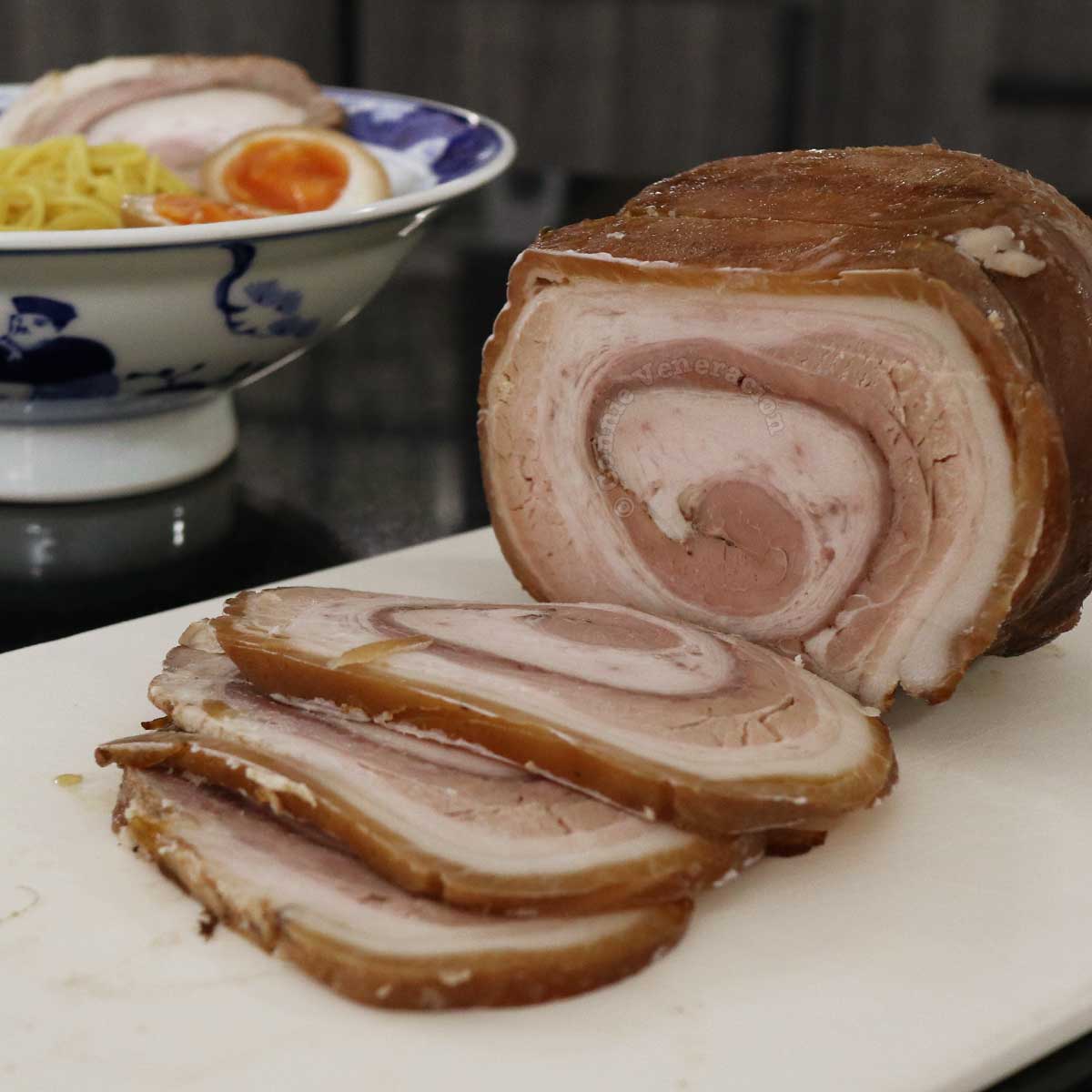
Equipment
- Slow cooker
Ingredients
- 1 kilogram pork belly
- salt optional
- pepper optional
- 2 to 3 cups cooking oil
- 2 stalks leeks
- 1 one-inch knob ginger
- ½ cup Japanese soy sauce
- ½ cup sake
- ½ cup mirin
- 1 cup bone broth (must be well seasoned)
Instructions
- Wipe the pork belly dry with kitchen paper.
- Lay the pork belly flat, skin side down. Sprinkle the meat with salt and pepper (optional step).
- Roll the pork belly tie up with kitchen twine as tightly as you can.
- Heat the oil in a wok and brown the rolled pork belly. For best results, turn the belly every few minutes to get even coloring.
- In the slow cooker, stir together the soy sauce, sake, mirin and the bone broth, then drop in the browned pork belly.
- Add the leeks and ginger.
- Set the slow cooker on HIGH and cook the pork belly for five hours. For even coloring, AFTER the first two hours (the liquid will be bubbling by then), give the pork quarter turns every hour.
- Cool the pork in the liquid.
- Scoop out the pork, allow to drip and place in a container with a tight lid. Chill in the fridge overnight.
- Take the pork out of the fridge and cut into slices.
- Your chashu is now ready to go into your bowl of ramen.

